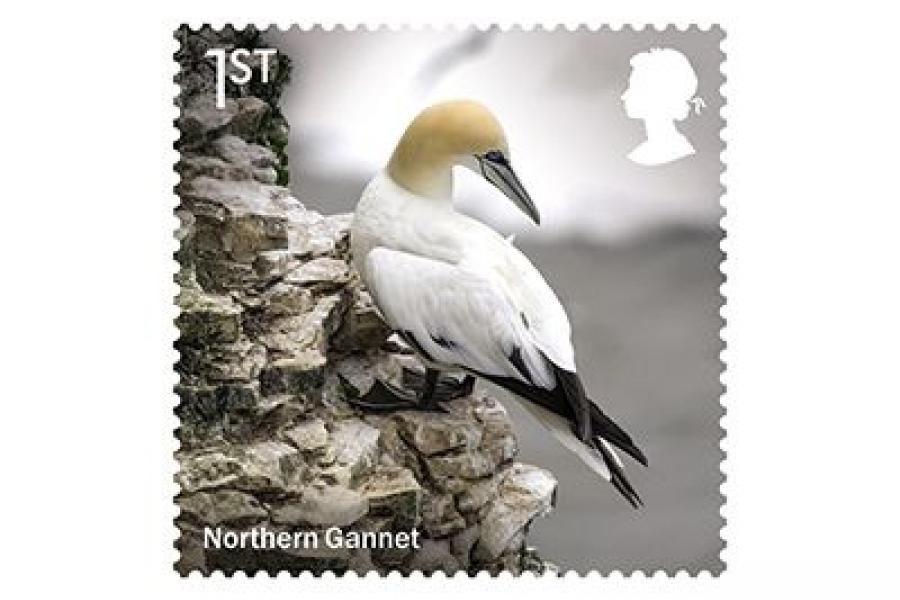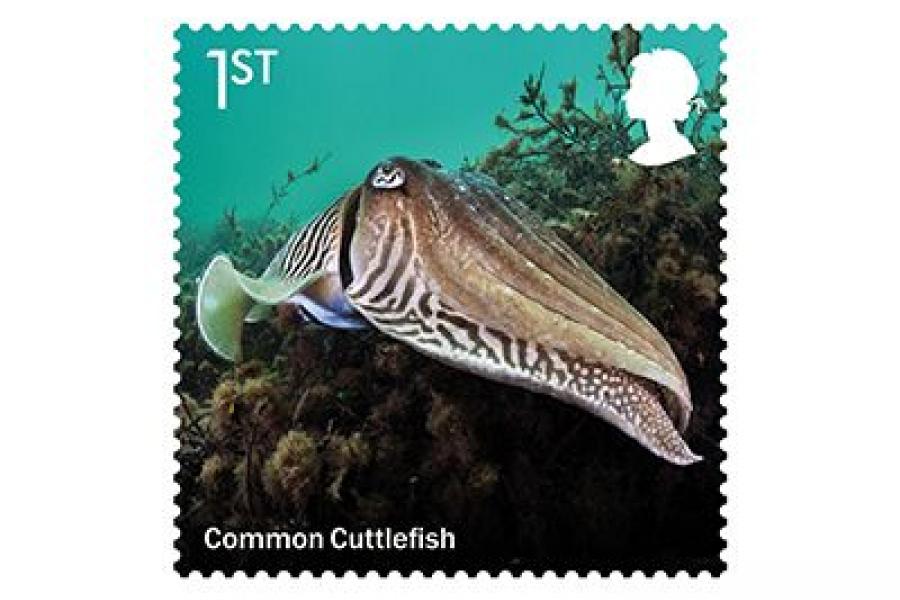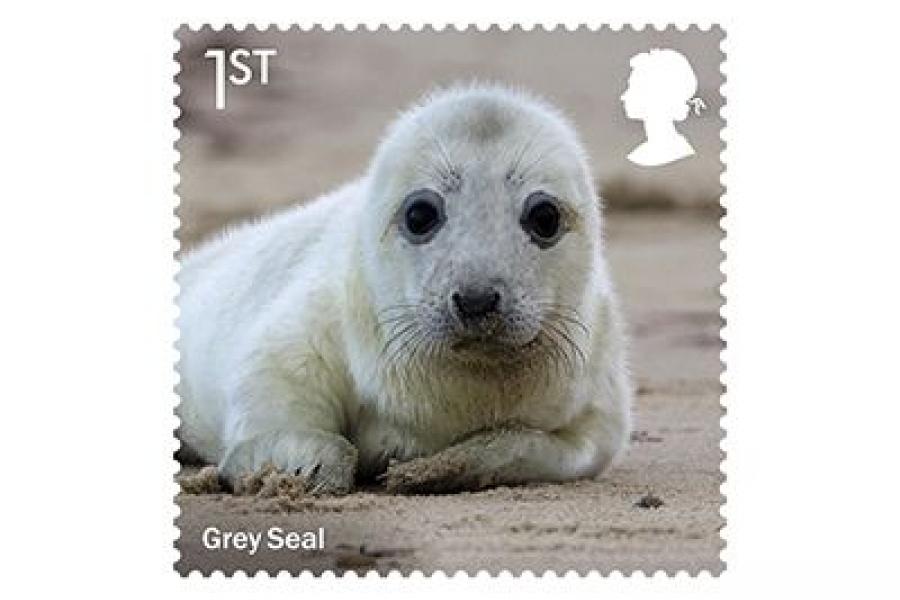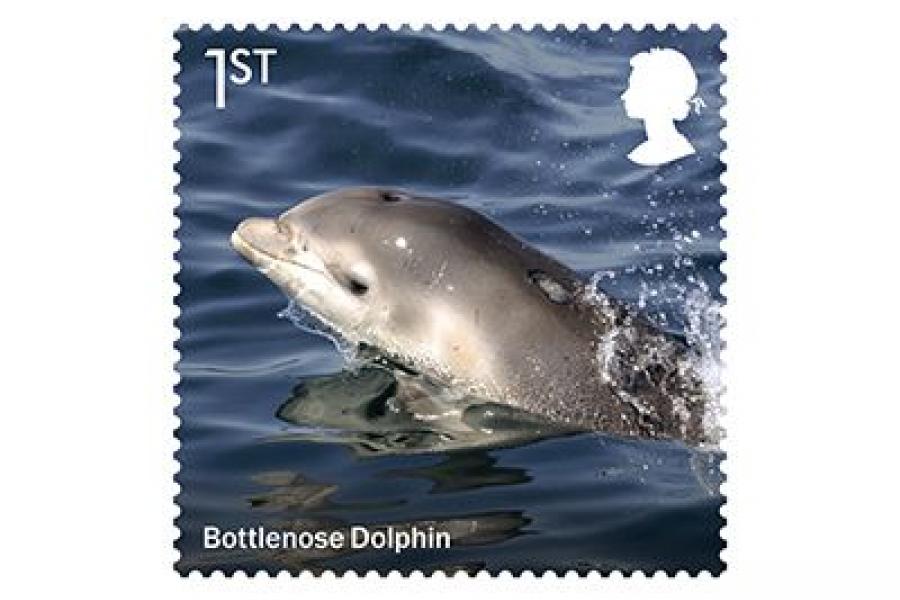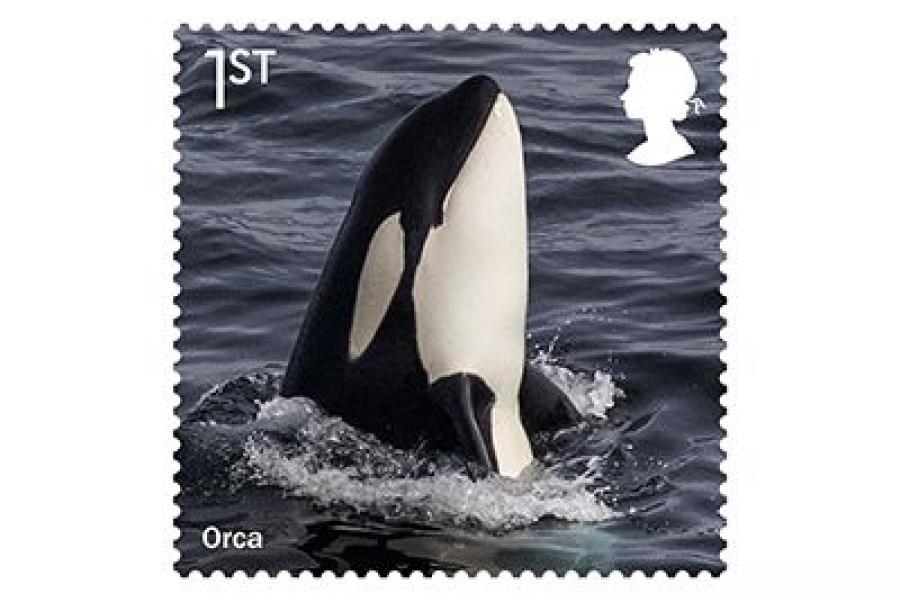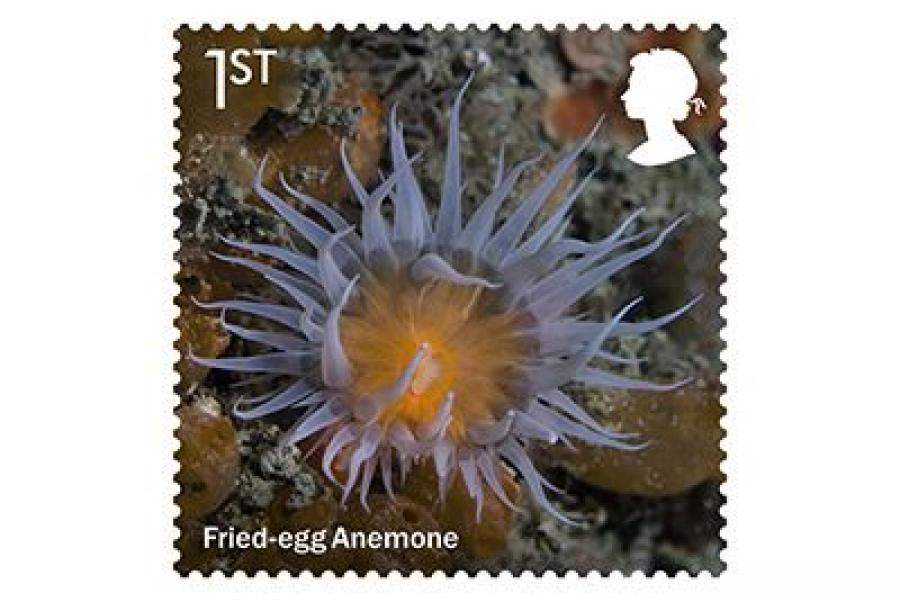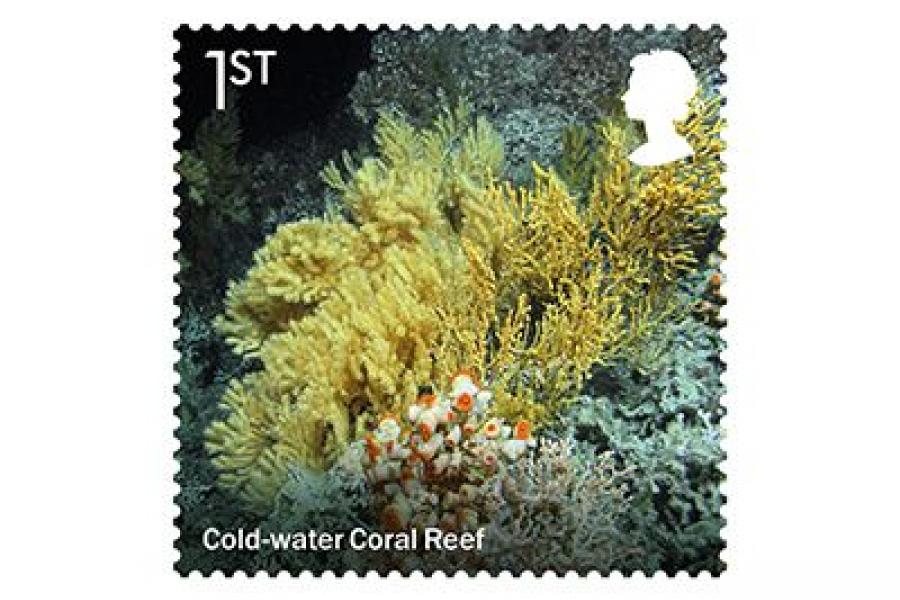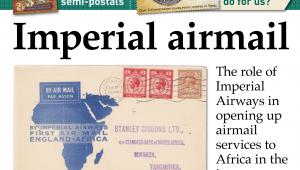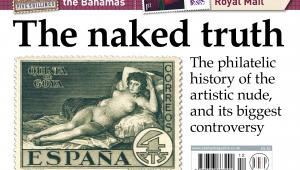Wild Coasts

The Wild Coasts special stamp issue, released on July 22, celebrates the surprising and beautiful diversity of marine life found in British coastal waters.
Nowhere in the UK is more than 70 miles from the coast, and the British Isles provide unique or ideal habitats for a multitude of species.
A set of 10 counter-sheet stamps showcases a wide variety of wildlife, from mammals, fish and birds to crustaceans, molluscs, anemones and coral.
An accompanying four-stamp miniature sheet illustrates the Marine Food Chain, demonstrating how energy is transferred from tiny organisms to top predators.
The sheet stamps were designed by Steers McGillan Eves, from photographs, while the miniature sheet was designed by Royal Mail Group, and illustrated by Maïté Franchi.
The issue was printed in litho by International Security Printers.
1st class NORTHERN GANNET
This distinctive seabird nests in large colonies on cliffs and rocky outcrops, and hunts fish by contorting its body into an arrow shape and diving spectacularly on its prey. It can hit the water at speeds up to 60mph, with a thickened skull and an airbag in its neck allowing it to survive the impact.
1st class COMMON CUTTLEFISH
This mollusc has an oval-shaped cuttlebone which helps to provide buoyancy, and can change colour and skin texture rapidly to blend in with its surroundings. It has a venomous bite to paralyse its prey, such as crabs and fish, and can squirt ink to deter predators.
1st class GREY SEAL
Almost half of the world’s population of this species lives in British waters, with numbers recovering following a slump. Its long and sensitive whiskers and streamlined body help it to hunt for fish in deep, murky water, and it has a third eyelid to protect its eyes from damage when diving.
1st class BOTTLENOSE DOLPHIN
Found around Britain and worldwide, this intelligent mammal lives in social groups, called pods, comprising anything from 20 to 1,000 individuals. It can navigate and hunt for fish in low visibility thanks to echo-location, which involves reflecting sound waves to create a mental picture of its surroundings.
1st class SPINY SPIDER CRAB
Found on southern and western coasts, this long-legged crustacean has a carapace covered in spines, with Velcro-like hooks which are used to attach algae to it for camouflage. It will eat anything from seaweed to starfish.
1st class LONG-SNOUTED SEAHORSE
This fish is one of two species of seahorse found in British coastal waters. Its slow, swaying movements make it almost invisible among seagrass, and it uses its long snout to catch small crustaceans and plankton. It is the male which broods fertilised eggs in a pouch before giving birth.
1st class ORCA
Although sometimes called a killer whale, this mammal is in fact the largest member of the dolphin family. It feeds on a variety of prey including seals, other marine mammals, fish and seabirds. The UK has a very small resident population off the Outer Hebrides, but transient groups may be spotted elsewhere.
1st class FRIED-EGG ANEMONE
This delicate anemone has white stinging tentacles, which it uses to catch passing small prey, but it is named after the orange oral disc which only a small number of individuals have. It can reproduce by splitting itself in half, in a process called longitudinal fission.
1st class CUCKOO WRASSE
This colourful fish, found near rocky sea-beds, has strong jaws and teeth to help it consume shelled prey such as crabs, urchins and molluscs. It begins life as a female, in groups dominated by a single male, but can become male if needed.
1st class COLD-WATER CORAL REEF
Although plant-like in appearance, corals are animals. And despite being widely associated with warmer waters, they have also formed biodiverse reefs, thousands of years old, in deep northern waters. Many corals incorporate microscopic symbiotic algae into their bodies, to feed on the energy they produce.
MINIATURE SHEET
1st class PHYTOPLANKTON
At level one in the marine food chain are photoautotrophs: plants, algae and some bacteria which convert sunlight into chemical energy through photosynthesis, and thereby fuel anything that eats them. These range from microscopic phytoplankton to seaweed.
1st class ZOOPLANKTON
At level two in the food chain are the herbivores which eat photoautotrophs. These include snails and fish, but at the smaller end of the scale are zooplankton, such as protozoa, tiny crustaceans and animal and fish larvae.
£1.70 ATLANTIC HERRING
At level three in the food chain are primary carnivores, which eat herbivores. Zooplankton, for example, are consumed by animals which range from shoals of anchovy and herring to basking sharks.
£1.70 HARBOUR PORPOISE
At level four in the food chain are secondary carnivores, which eat other carnivores. Examples include seabirds, seals, porpoises, orcas and most sharks.
OTHER PRODUCTS
The presentation pack explores the marine habitats which support wildlife, and the complex interaction between species, as well as expanding on the creatures featured on the stamps.
A press sheet of 14 uncut miniature sheets is available, along with the usual stamp cards and first day covers.
PRICES
Set of 10 stamps £8.50
Miniature sheet £5.10
Presentation pack £14.50
Stamp cards £6.75
First day cover (stamps) £10.85
First day cover (mini sheet) £6.80
Press sheet £78.55
VERDICT
COMMEMORATIVE WORTH 3/5
It’s worth highlighting the diversity of British coastal wildlife, even if it has been done before.
QUALITY OF DESIGN 4/5
The photography is beautiful, and the miniature sheet illustration is informative
WOW FACTOR 3/5
These stamps should attract attention if they are used on commercial mail
